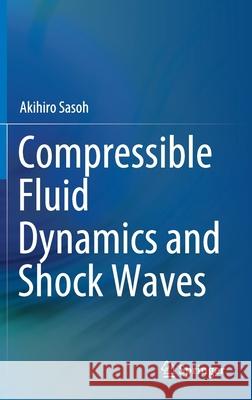Compressible Fluid Dynamics and Shock Waves » książka
topmenu



Compressible Fluid Dynamics and Shock Waves
ISBN-13: 9789811505034 / Angielski / Twarda / 2020 / 276 str.
Compressible Fluid Dynamics and Shock Waves
ISBN-13: 9789811505034 / Angielski / Twarda / 2020 / 276 str.
cena 722,88
(netto: 688,46 VAT: 5%)
Najniższa cena z 30 dni: 693,97
(netto: 688,46 VAT: 5%)
Najniższa cena z 30 dni: 693,97
Termin realizacji zamówienia:
ok. 22 dni roboczych
Dostawa w 2026 r.
ok. 22 dni roboczych
Dostawa w 2026 r.
Darmowa dostawa!
Kategorie BISAC:
Wydawca:
Springer
Język:
Angielski
ISBN-13:
9789811505034
Rok wydania:
2020
Wydanie:
2020
Ilość stron:
276
Waga:
0.58 kg
Wymiary:
23.39 x 15.6 x 1.75
Oprawa:
Twarda
Wolumenów:
01
Dodatkowe informacje:
Wydanie ilustrowane
1. Propagation of pressure waves
1.1 Propagation of sound wave
1.2 Sound waves from free flight body
1.3 Motion of beads system and wave propagation
1.3.1 Piston-bead collision
1.3.2 Bead-bead collision
1.3.3 Motions of piston and beads
1.3.4 Characteristic velocities
1.3.5 Averaged particle velocity
1.3.6 Kinetic energies
1.3.7 Compression ratio
1.3.8 Force on piston
1.4 Pressure wave propagation in collision between solids
2. Motions of gas particles related to thermodynamics
2,1 Fundamentals of thermodynamics
2.2 Thermal speed and flow velocity
2.3 Pressure
2.4 Energy and temperature
2.5 Ideal gas and its equation of state
2.6 Entropy
2.7 Enthalpy, total temperature and total pressure
2.8 Multi-component gas
3. Basic equations for flow
3.1 Conservation equations
3.1.1 Conservation of mass
3.1.2 Conservation of momentum
3.1.3 Conservation of energy
3.1.4 Other relations
3.1.5 Similarity in inviscid flow
3.2 Galilean transformation
3.2.1 Inertial frame of reference
3.2.2 Galilean transformation
3.2.3 Application to flow conservation equations
4. Discontinuity
4.1 Conditions and categories
4.1.1 Rankine-Hugoniot relations
4.1.2 Categories
4.2 Normal shock wave
4.2.1 General relations
4.2.2 Relations for thermally perfect gas
4.2.3 Glancing incidence
4.2.4 Stability of shock wave
4.2.5 Shock propagation with boundary layer
4.3 Oblique shock wave
4.3.1 Relations for oblique shock wave
4.3.2 Mach wave
4.3.3 Dual solutions
4.3.4 Attached and detached shock waves
4.4 Instability of discontinuities
4.4.1 Rayleigh-Taylor instability
4.4.2 Richtmyer-Meshkov instability
4.4.3 Kelvin-Helmholtz instability
5. Quasi-one-dimensional flows
5.1 Control volume and basic equations
5.1.1 Control volume
5.1.2 Conservation of mass
5.1.3 Conservation of momentum
5.1.4 Conservation of energy
5.1.5 Equation of state
5.1.6 Speed of sound
5.1.7 Flow Mach number
5.1.8 Relation among derivatives
5.2 Flow characteristics
5.2.1 Influence coefficients
5.2.2 Effects of duct cross-sectional area
5.2.3 Effects of heating/cooling
5.2.4 Effects of friction
5.2.5 Effects of volume force
5.2.6 Choking condition
5.3 Duct flow with friction
6. System with source terms
6.1 Generalized Rankine-Hugoniot relations
6.2 Detonation/deflagration
6.2.1 Regime of solution
6.2.2 Detonation
6.2.3 Deflagration
6.2.4 Variation in entropy
6.2.5 Variation in energy
6.2.6 ZDN model
6.2.7 Cellular structure in detonation
6.3 Ram accelerator
6.3.1 Operation principle and performance
6.3.2 Derivation of thrust
6.3.3 Thermally choking
6.3.4 Experiments
6.4 General form for jet propulsion
6.5 Air-breathing engine
7. Two-dimensional flows
7.1 Compression/expansion waves and Prandtl-Meyer function
7.2 Prandtl-Meyer expansion
7.3 Supersonic flow over a cone
7.4 Shock wave reflection
7.4.1 Reflection patterns in steady flows
7.4.2 Shock polar
7.4.3 Two-shock theory
7.4.4 Three-shock theory
7.4.5 Transition criteria
7.4.6 Exercise: Supersonic flow over triangle wing
8. Unsteady, one-dimensional flows
8.1 Sound wave
8.2 Characteristics and invariants
8.3 Compression waves
8.4 Expansion waves
8.5 Pressure wave propagation over normal shock wave
8.6 Shock propagation in variable-area duct
8.7 Blast waves
9. Riemann problem
9.1 Definition and solution of the problem
9.2 Shock tube
9.3 Reflection of normal shock wave
9.4 Reflection of expansion fan
9.5 Interaction between normal shocks
9.5.1 Head-on collision
9.5.2 Catching up with another normal shock
9.6 Interaction between shock wave and contact surface
10. Method of characteristics
10.1 Design of supersonic nozzle
10.1.1 Treatments for characteristic and flow
10.1.2 Design procedures of Laval nozzle
10.2 Wave diagram of shock tube operation
11. Generation and applications of compressible flows
11.1 Nozzle and orifice
11.1.1 Isentropic relations withr duct cross-sectional area
11.1.2 Flow rate
11.1.3 Thrust
11.1.4 Nozzle pressure ratio and its effects on flow/wave pattern
11.2 Supersonic diffuser
11.2.1 One-dimensional treatments
11.2.2 Multi-dimensional effects
11.2.3 Pseudo shock wave
11.3 Test methods of supersonic flow
11.3.1 Supersonic wind tunnel
11.3.2 Supersonic free flight
11.4 Unsteady drive
11.5 Shock tunnel
11.6 Expansion tube
11.7 Ballistic range
12. Shock-like phenomena
12.1 Shallow water flows
12.2 Traffic flows
12.2.1 Equilibrium model
12.2.2 Equation of motion and characteristics
12.2.3 Particle model
Appendix
A1. Derivative operator in various coordinates
A2. Conservation equations on curvilinear frames
A3. Stress tensor in compressible fluids
A4. Isentropic compressibility
A5. Derivation of characteristics and invariants in ageneral form
Akihiro Sasoh is a Professor at the Department of Aerospace Engineering, Graduate School of Engineering, Nagoya University. He received his Ph.D. from the University of Tokyo in 1989. His research interests include compressible fluid dynamics and space propulsion. He has co-authored more than 200 journal articles and conference papers.
This book offers comprehensive coverage of compressible flow phenomena and their applications, and is intended for undergraduate/graduate students, practicing professionals, and researchers interested in the topic. Thanks to the clear explanations provided of a wide range of basic principles, the equations and formulas presented here can be understood with only a basic grasp of mathematics.
The book particularly focuses on shock waves, offering a unique approach to the derivation of shock wave relations from conservation relations in fluids together with a contact surface, slip line or surface; in addition, the thrust of a rocket engine and that of an air-breathing engine are also formulated. Furthermore, the book covers important fundamentals of various aspects of physical fluid dynamics and engineering, including one-dimensional unsteady flows, and two-dimensional flows, in which oblique shock waves and Prandtl-Meyer expansion can be observed.
1997-2025 DolnySlask.com Agencja Internetowa
Zobacz: Księgarnia Czeska | Wydawnictwo Książkowe Klimaty | Mapa strony | Lista autorów
KrainaKsiazek.PL - Księgarnia Internetowa
KrainaKsiazek.PL - Księgarnia Internetowa









